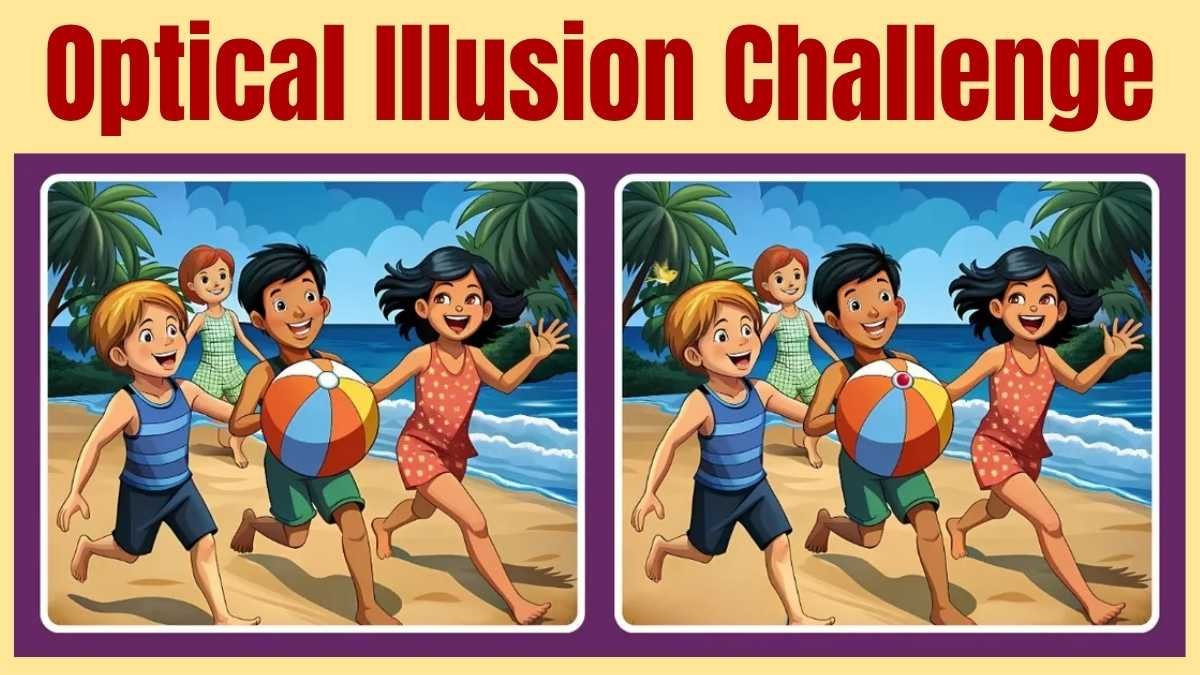Have you ever come across those classic “spot the difference” puzzles that challenge your attention to detail and observation skills? These visual puzzles have been a favorite pastime for many, offering a fun way to sharpen the mind and engage in some lighthearted competition with friends or family. One particularly interesting category involves beach scenes filled with people enjoying the sun, sand, and surf. These vibrant, dynamic images provide an excellent canvas for subtle changes and tricky differences. Today, we’ll explore the thrill of spotting three differences in a beach photo featuring people and why such puzzles are both entertaining and beneficial.
The Allure of Spot the Difference Puzzles
Spot the difference puzzles have been around for decades, and their appeal has stood the test of time. Their simplicity masks the level of concentration and perceptiveness required to complete them. The premise is straightforward: two images look nearly identical, but small differences often subtle are hidden within. The challenge is to identify all those differences within a given time or before making a mistake.
When the images are of people on a beach, the complexity increases. There are so many elements that can be altered a person’s pose, an accessory like a hat or sunglasses, a change in color or pattern on clothing, or even an object such as a beach ball or towel. These puzzles tap into your ability to notice small deviations in a busy environment, testing your brain’s capacity for visual memory and detail recognition.
Why Beach Scenes Are Perfect for This Challenge
Beach photos are uniquely suited for spot the difference puzzles. For starters, the beach is an inherently busy and colorful environment. The combination of natural elements like sand, water, and sky alongside human activity creates a visually rich scene. People are often in casual, dynamic poses, wearing varied clothing, and interacting with beach items towels, umbrellas, surfboards, coolers, and more.
This variety means that creators of spot the difference puzzles can easily introduce subtle changes that blend seamlessly into the overall scene. For example, swapping the color of a beach ball, removing a sunhat, or altering the position of a person’s arm can be tricky to catch immediately but obvious once spotted. These changes are carefully designed so that they are neither too easy nor impossible to find.
How to Approach Spotting Differences Effectively
Spotting the three differences in a beach photo, or any similar puzzle, is not always a matter of luck; it’s about having a strategy. Here are some tips to improve your success rate and make the experience more enjoyable:
- Divide the Image into Sections
Instead of scanning the entire photo randomly, mentally divide it into sections. Focus on one part at a time perhaps the left side first, then the center, and finally the right. This systematic approach prevents missing details and helps keep track of what you have already checked. - Look for Oddities
Your brain is naturally good at spotting things that don’t fit. Look for elements that seem out of place, whether in shape, size, color, or positioning. For instance, a palm tree might have one fewer leaf in one image, or a person’s sunglasses might be missing in the second photo. - Compare Similar Objects Closely
Pay close attention to objects and people that appear in both images. Are their poses exactly the same? Are accessories like hats or towels the same color and shape? Small details such as a missing stripe on a swimsuit or a change in hairstyle can be the key. - Use Peripheral Vision
Sometimes staring directly at one part of the photo can make you overlook subtle changes. Try shifting your gaze slightly and using your peripheral vision to catch movement or differences that your direct focus misses. - Take Breaks
If you’re struggling to find differences, step back for a moment. A brief mental reset allows your eyes to see the images fresh and might reveal something you missed initially.
Benefits of Playing Spot the Difference Games
Beyond pure entertainment, engaging in spot the difference puzzles offers several cognitive benefits:
- Improves Attention to Detail: These puzzles train your brain to notice small variations, enhancing your focus and observational skills in everyday life.
- Boosts Visual Memory: Remembering parts of the image while scanning helps strengthen short-term visual memory.
- Enhances Problem-Solving Skills: Deciding where to look next or how to approach the puzzle involves strategic thinking.
- Provides Stress Relief: The focused, yet enjoyable nature of the game can serve as a pleasant mental break from daily stress.
- Encourages Social Interaction: Solving puzzles with friends or family fosters communication and collaboration.
Common Types of Differences Found in Beach People Photos
To give you a better idea of what to look for in a beach people photo puzzle, here are some common types of differences puzzle creators often use:
- Clothing and Accessories: Changes in swimsuit color or pattern, missing sunglasses, or different styles of hats.
- Body Position and Gestures: Altered arm positions, head tilts, or swapped leg placements.
- Objects and Props: Beach balls, umbrellas, towels, surfboards, or drinks that might be missing or changed.
- Background Elements: Clouds, waves, palm tree leaves, or footprints in the sand could be different.
- Lighting and Shadows: Variations in shadows or reflections, though subtle, can also count as differences.
The Fun of Friendly Competition
Trying to spot three differences quickly adds a fun challenge and a sense of urgency. Whether you’re racing against the clock or competing with friends, it’s a great way to engage in light competition. It also makes the puzzle more addictive; once you find one difference, the urge to find the rest intensifies.
Many apps and websites now offer these puzzles, allowing you to play anywhere, anytime. But there’s also a charm in printed versions whether in magazines, puzzle books, or homemade by creative friends and family.
Conclusion: Are You Ready to Take the Challenge?
Next time you come across a beach people photo with a “spot the difference” challenge, try these tips and see how quickly you can identify all three differences. It’s a simple yet satisfying mental workout that can improve your observation skills while providing a fun distraction.
So, how fast can you spot those three subtle differences? Take a deep breath, focus your eyes, and dive into the scene just like you would jump into the refreshing ocean waves on a sunny day. Happy spotting!




